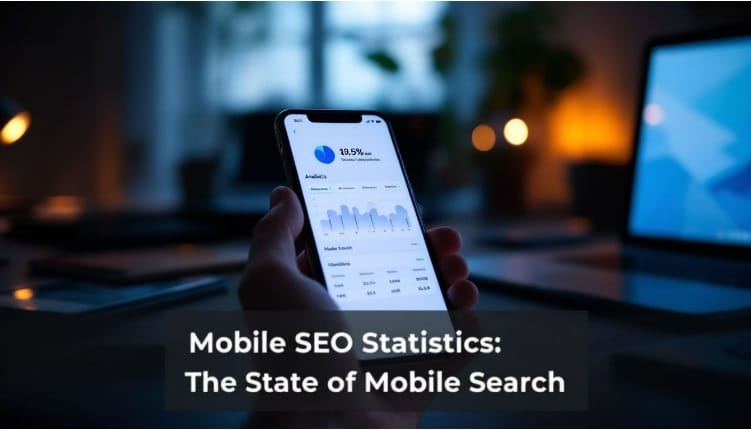Struggling to get your local business noticed online? Local business schema is a game changer for visibility. This guide will show you how to use it, making your shop stand out in search engines like Google.
Get ready for more customers!
Key Takeaways
- Local business schema acts like a digital sign for Google, telling it all about your store. It uses tags for your business name, location, and hours to make you stand out in searches.
- Adding details like your address, phone number, operation hours, and website URL in the schema makes it easy for customers to find you. Use tools like Schema Markup Validator or Google’s Structured Data Markup Helper to check your work.
- Using local business schema can put your shop in special spots on search pages. This means more people see you when they look for what you sell online.
- Avoid common mistakes such as leaving out important info or using the wrong type of schema. Check your markup with tools like Google’s Structured Data Testing Tool and keep information up-to-date.
- Regular updates to your local business schema help customers always find accurate information about you, leading them directly to your services or products.
Download Our Free SEO Guide Here!
Understanding Local Business Schema
Local business schema is like a special code that tells Google all about your shop. It’s made up of tags for things like your store’s name, where it is and when it opens.
Definition and Importance
Local business schema, also known as structured data markup, is a digital secret handshake with search engines like Google, Bing and Yahoo. Imagine your business wearing a neon sign that says exactly what it does and when it’s open.
That’s what schema markup does for you online. It uses the Schema.org vocabulary to make sure search engines know exactly what your business is and what services you offer. Erica Santiago wrote about this on July 6, 2022 and called it a must have in your digital marketing toolbox.
This is a standardized format and it’s not just smart, it’s necessary for visibility in search results pages (SERPs). Local SEO is getting more competitive by the day so dropping breadcrumbs in HTML code form gives your website a chance to stand out.
Think of it like giving Googlebot—the robot that indexes websites for Google—a map to feature your business more accurately in searches related to what you offer. This means higher rankings and could get you prime real estate like the knowledge panel or carousel display where customers see you first.
What to Include
Making your local business visible on Google searches can be tough. But with correct data formatting like schema markup, your business becomes visible to customers. Here are the key details to consider:
- Business Name: Start with the basics; make sure your business name is recognizable.
- Address: Your physical address must be accurate. Imagine a customer walking to your doorstep with precise directions from their search.
- Phone Number: This is easy; customers need to call and ask if their preferred item is in stock.
- Hours of Operation: Avoid customer inconvenience by clearly stating your hours of operation.
- Website URL: A click should take them to your website to learn more about your business.
- Price Range: Give customers an idea of the price.
- Coordinates: Latitude and longitude in this digital age can guide customers to your location.
- Social Media Links: Customers can connect with you online and get excited and build credibility!
- Image URL: An image speaks a thousand words; make sure your images reflect your business and atmosphere.
For example, if you have GreatFood, make sure its awesomeness is showcased through clear images and easy to find links on your website so Google can recommend you.
Chaz’s Charters did this perfectly by including every detail, from the boat images to the exact geocoordinates, to attract sea adventure enthusiasts.
Using tools like Schema Markup Validator or Google’s Structured Data Markup Helper makes the process easier and prevents errors from derailing you.
Through my experience of filling in these details on my website I found out how important each one was not only for visibility but for connecting with customers browsing the internet immediately.
Makes you visible in local searches and gives customers an idea of your business before they even step foot in your store—all in a few clicks and swipes.

Benefits of Using Local Business Schema
Putting local business schema to work boosts your spot in online searches. It’s like giving your shop a digital megaphone that says, “Hey, look over here!
Increased Search Visibility
Local schema markup makes your website stand out to Google, Bing, and Yahoo. This means more people see your business online when they search for what you offer. It’s like having a big sign on the internet highway saying “Hey, come check us out!” With local schema, details about your shop like your NAP (name, address, phone number), business hours, and contact information get highlighted.
This boosts your spot in search engine results pages (SERPs), pulling in more clicks from potential customers.
By adding this special code to your site’s HTML5, tools such as Google’s Search Engine and Bing read it easily. They use this info to put you ahead of competition that doesn’t use schema markup.
Think of it as giving search engines a map to find you faster and easier than ever before. Plus, with rich snippets showing extra goodies like star ratings or prices right on the SERP, folks are more likely to click through to yours rather than someone else’s page.
Rich Snippets and Enhanced SERP Features
Rich snippets and enhanced SERP features make your website stand out in Google, Bing, and Yahoo searches. They do this by adding special details like ratings, images, or business hours right below your webpage link.
These snippets act like a spotlight on your site, attracting more eyes and potentially increasing click-through rates. Imagine searching for a chocolate cake recipe and seeing one result with stars for its rating, a tempting photo of the cake, and bake time.
You’re likely to click that first!
Google Search Console provides tools to help you add these rich snippets to your web pages. By using structured data markup code correctly on your about page or landing page, you give search engines clear information about your content.
This makes it easier for them to show off your site’s best features in search results.
A picture is worth a thousand clicks.
Improved Local Pack Placement
Implementing local business schema allows your store to become more visible, metaphorically speaking. Imagine a scenario where someone is looking for the “top coffee in town,” and your store appears prominently in Google’s local pack.
This is like having a VIP position in the search results! This is not just a coincidence; it’s all due to effective SEO strategy. By incorporating details like your store’s address, phone number, and customer feedback in a structured data format, you become more noticeable in local search results.
I adopted this strategy for my bakery. After updating our website with structured data via WordPress tools, and testing it on Google’s Structured Data Testing Tool, we observed a significant improvement.
Our bakery began to show higher not just in ordinary search engine results, but also in those attractive boxes that appear at the top of Google when individuals search for local bakeries.
Indeed, our click-through rates escalated since potential customers could easily locate us without needing to scroll down. This enhancement did not occur instantly, but observing those small advancements week after week felt like observing a fascinating process unfold before me.
Ways to Apply Schema Markup for Local SEO
Adding schema markup for local SEO sounds tricky, right? But it’s like giving Google a map to your shop. First, pick the best kind of schema — like choosing whether you want a billboard or a signpost.
Then grab tools like Google’s Structured Data Markup Helper; think of it as painting by numbers for your website. Make sure your business name, location, and contact info are crystal clear – imagine if someone sent you a letter without using your full address.
That’s how important these details are!
Choosing the Relevant Schema Type
Picking the right schema type for your local business is like choosing the perfect outfit for an important event; it’s crucial to make a great first impression on Google, Bing, and Yahoo.
For instance, if you run “Chaz’s Charters,” you might opt for a BoatReservation or FishingGuide category instead of just tagging it as a generic Local Business. This ensures that search engines understand exactly what your business offers, leading to better visibility and higher search engine rankings.
If your business doesn’t fit neatly into one of these specific categories, don’t sweat it. You can still use a more general schema like Local Business or Organization but spice it up with the “sameAs” property.
This tells search engines about other places on the web where your business is mentioned, linking all those mentions together to boost your presence in rich search results.
Fitting the right schema type to your local business is like giving Google a map directly to your door.
Utilizing Structured Data Markup Tools
You can use a schema markup generator to easily create code for your local business. This tool helps you add relevant details about your business, like hours and location, in a way that search engines understand.
After creating the code, make sure to check it with Google’s Rich Results Test or Schema Markup Validator. These tools show if there are any mistakes in your structured data before it goes live on the web.
For those not keen on writing code, using a schema app, managed user interface (UI), or plugin can simplify the process. These options offer a hands-off approach to implementing structured data on your site.
They work well with platforms like WordPress, making them ideal for SEO specialists aiming to boost visibility on Google, Bing, Yahoo, and Yandex without diving deep into technical details.
Optimizing Name, Address, and Phone (NAP) Data
Getting your name, address, and phone number right might sound like a piece of cake. Yet, many businesses trip over this basic step. Make sure these details are spot-on across the web.
It’s like making sure all roads lead back to you. Use HTML to embed your NAP data firmly on your site. Plus, add working hours to show when you’re open for business.
Tools like JSON-LD help you tag this info in a way that search engines love. Think of it as speaking Google’s language but using code instead of words. It makes it easier for potential customers to find you without needing a map and compass.
Keep an eye on this data regularly; keep it fresh and accurate like bread straight from the oven. This is not just about being neat; it’s about leading people right to your doorstep.

Common Mistakes to Avoid in Schema Implementation
Implementing the correct schema markup on your website is akin to providing Google with a roadmap to your store. Get it wrong, and your visibility might as well be zero. Here are a few common errors:
- Omitting critical information: Consider details such as your business’s name, address, phone number, operating hours, and website URL as essential in schema markup. It’s like going on a scavenger hunt but neglecting the map. That’s the outcome if these details are omitted.
- Choosing an inappropriate schema type: It would be just as absurd to wear flip-flops on a mountain trek as to use the wrong schema for your business, which can mislead you. Whether you operate a bakery or a bookstore, ensure the choice is appropriate.
- Disregarding Google’s Structured Data Testing Tool: This tool serves as a companion in the thorough process of schema installation. Not verifying your markup with this tool equates to disregarding weather alerts on an outdoor adventure – a precarious endeavor!
- Neglecting regular updates: Ever tried visiting a friend but discovered they’ve relocated without notifying you? Outdated schema data does the same to your customers. Regularly updated information ensures people can consistently locate your establishment.
Through personal observations, I’ve noticed businesses suffer because they assumed that once established, schema markup doesn’t require ongoing attention—it’s like planting a tree and never hydrating it. They failed to achieve increased click-through rates from prospective customers who couldn’t locate their current offerings or accurate contact details.
While these errors may appear insignificant initially, avoiding them can significantly improve how easily customers find and select your local business in comparison to others.
Conclusion
Leaping into local business schema feels like discovering a new trick for your online visibility. Think of it as giving Google a guide to your treasure—your business. With careful arrangement of key details using schema markup, you’re not just increasing your placement in searches; you’re switching on a noticeable sign that pronounces “Here we are!” So, gather your instruments—indeed, referring to markup generators and structured data helpers—and enhance your business’s radiance on the digital map.
Every detail matters in creating a lasting initial digital impression. Let’s simplify the process for customers to discover you, transforming clicks into visits and inquiries into successful transactions.
Now proceed and claim your spot in the online landscape!

Frequently Asked Questions
-
What's the deal with local schema markup?Local schema markup is a tool that can give your local business visibility a real boost. It's like putting up a neon sign, but in the digital world! By using JavaScript Object Notation for Link Building and Image Metadata, you're giving search engines extra info to help them understand what your business is all about.
-
How does this affect my click-through rates (CTRs)?Well, think of it as an open door inviting people into your shop or restaurant. With clear information presented through schema markup, potential customers are more likely to click on your link when they find it in their query results - boosting those CTRs!
-
Can I use widgets and portals like HubSpot for local schema markup?Absolutely! Platforms such as HubSpot make it easier than ever to implement these best practices without needing an advanced degree in computer science.
-
Is there any connection between local schema markups and social platforms such as LinkedIn or YouTube?You betcha! Including links to your LinkedIn profile or YouTube videos within your website’s code can enhance customer experience by providing easy accessibility to more information about you and what you do.
-
Where can I learn more about implementing Local Schema Markup?There are many resources out there; documentation online, education portals offering courses – even Q&A forums where experts answer questions from the community.

















0 Comments